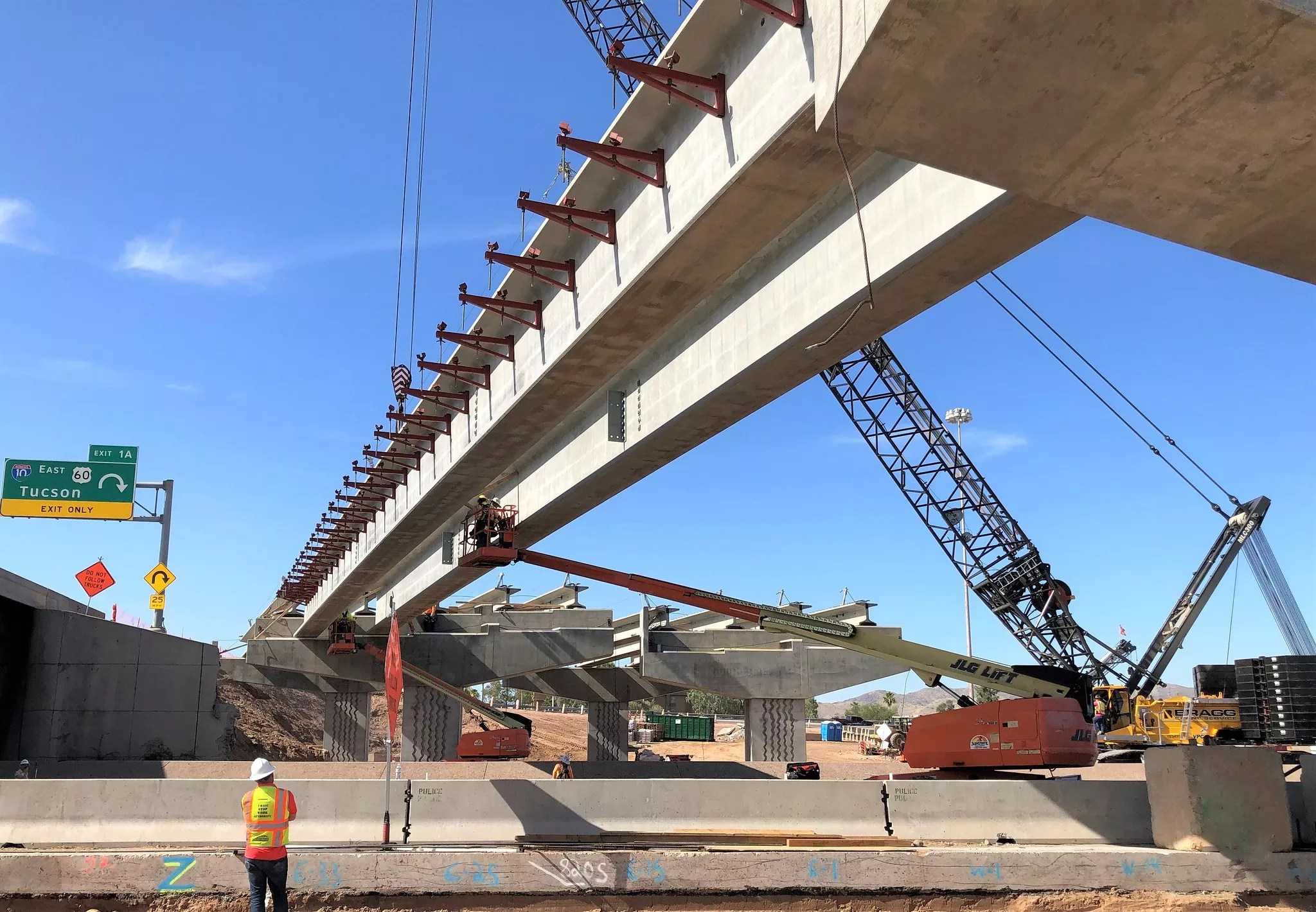
Arizona Department of Transportation

Audio By Carbonatix
For almost four years, Valley residents have weathered constant headaches and detours as a large section of Interstate 10 has undergone reconstruction.
Known as the I-10 Broadway Curve Improvement Project, the roadwork has spanned 11 miles of the interstate between Loop 202 and Interstate 17 near Phoenix Sky Harbor International Airport. It’s the largest freeway reconstruction project in the history of the Arizona Department of Transportation.
And it’s been a pain in the ass. The work has been so disruptive that ADOT created The Curve App to help Valley drivers navigate restrictions. But in 2025, motorists finally will be rewarded for their patience.
The project is scheduled to be completed by the end of May, treating drivers to more and wider lanes, new bridges and sound walls – all in preparation for an expected 25% increase in traffic by 2040.
“We’re over the moon that this project is coming to completion and a lot of the benefits are being seen now,” ADOT spokesperson Marcy McMacken told Phoenix New Times. “It’s an exciting time. Everything’s coming together.”
As motorists count down the days until they finally can drive directly from Point A to Point B with ease, here’s what Valley residents should know about the project:
When will the I-10 Curve project be finished?
According to McMacken, the project is “actually like a month away from being absolutely done. Within four to five weeks, we’ll be completely done.”
Valley drivers can expect to sail smoothly through the Broadway Curve by the end of May.
McMacken said that “all the major components of the project” – including bridges, earthwork and ramp configurations – “are complete.” A total of 21 bridges had to be rebuilt entirely, reconfigured or widened. McMacken said what remains is “really just a lot of cosmetic work,” such as lighting, signage, lane striping and landscaping.
Will there be any more road closures?
The last closure before the project’s completion will take place from May 10 to the morning of May 11, with closures on eastbound I-10 between State Route 143 and U.S. 60.
“That should be our last one,” McMacken said. “I know a lot of people will be happy to hear that.”
When did the I-10 Curve project start?
Construction on the project began in fall 2021. However, funding goes back much further. The project is funded by Proposition 400, which Maricopa County voters approved in 2004. The measure instituted a dedicated half-cent sales tax, which the Maricopa Association of Governments used to fund projects as part of its regional transportation plan.
Proposition 400 was set to expire on Dec. 31, 2025. However, in November, Maricopa County voters passed Proposition 479, extending the tax for another 20 years.
Why do we need the I-10 Curve project?
The proposed improvements were derived predominantly from research conducted by MAG between April 2014 and May 2017. The Spine Study analyzed long-term strategies to improve mobility in the I-10 and I-17 corridor. The study suggested the reconstruction would reduce travel times on I-10 during peak hours, improve access to Phoenix Sky Harbor International Airport, support ride-sharing and public transportation options, and prepare the area for the Valley’s projected growth.
According to the study, the project’s improvements will save drivers 2.5 million hours annually that they’d otherwise spend in traffic.
What has the I-10 Curve project entailed?
Some of the project’s changes include:
- Widening the highway to six general-purpose lanes and two high-occupancy vehicle lanes in each direction between U.S. Route 60 and I-17. Between Ray Road and the 60, the highway will be widened to four lanes in each direction.
- Adding collector-distributor roads, which connect a freeway’s main lanes to entrance ramps, between Baseline Road and 40th Street to run parallel to I-10. These roads will separate through traffic from local drivers entering or exiting the freeway.
- Rebuilding the I-10 interchange with State Route 143 to improve traffic and create a direct connection to HOV lanes for SR 143 drivers.
- Replacing the bridges that take Broadway Road and 48th Street over the highway.
- Widening the bridges that take the highway over the Salt River.
- Building two pedestrian and cyclist bridges between Baseline and Broadway roads to benefit the Sun Circle Trail.
- Building sound and retaining walls.
What feedback has ADOT received?
McMacken said that ADOT has received positive feedback on the project over social media and email and that “motorists have noticed a difference just traveling through the Broadway Curve area.”
“As more and more lanes open, the feedback has been increasing in positivity,” she said. “It was constructed to really reduce congestion and travel times through that Broadway Curve area, which we’re already seeing.”